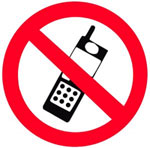
WiFi, a type of wireless broadband, is like a cordless phone. It’s good around the house. Mobile broadband, however is like your cell phone but only for the internet. It’s good almost anywhere.
So, if it’s like your cell phone, then there must be multiple providers right?
You bet there are.
As a matter of fact, they’re the same people that provide your cell service:
- Evolution Data Optimized (EV-DO) provided by Verizon (and Alltel) & Sprint
- High Speed Packet Access (HSPA) provided by AT&T & T-Mobile
Without getting too much into techno-talk, they both get you on the internet at 3G speeds (that just means it feels like a DSL connection).
Don’t take my word for it though, listen to the pretty lady with a british accent:
Mobile Broadband In a 2 Minute Nutshell
Here’s a basic explanation of 3G service. While the providers mentioned are European, the rest is basically the same no matter where in the world you are.
Fun Fact
You don’t have to get mobile broadband through your current cell phone provider
Even though it’s provided by your cell phone company, you aren’t obligated to get it through whoever’s currently got you tied up in a contract.
You can easily have your cell phone service provided by Sprint but 3G service through Verizon.
To your cell phone company, mobile broadband is a wholly separate ‘line of service’. It’s not treated as part of a ‘family plan’ structure where all the other phones are linked to a main account.
For all intensive purposes, a carrier sees a mobile broadband card or device as just a cell phone that’s configured to only transfer data and connect easily with your laptop.
"But wouldn’t I be skipping out on some kind of discount or deal?"
Not much actually.
While a few companies like Sprint may discount your mobile broadband by $10 if you bundle your cell phone as well, there’s not much point if they’ve got crappy speed or coverage in your area.
Before you knock it though, be sure to stick around for the lessons on "Who’s Got The Fastest Mobile Broadband?", "Who’s Got The Best 3G Coverage?" and others that’ll cover everything you need to know before getting mobile broadband.
There are 2 other ways to get mobile broadband that are coming mainstream.
Enter WiMAX and LTE

WiMAX and LTE promise to bring the speed of cable high speed internet without wires.
WiMAX (backed by Sprint) and LTE (backed by AT&T & Verizon) have grabbed the moniker of 4G (fourth generation) wireless technology for their speed & reliability. Both have been built from the ground up to handle massive amounts of data wirelessly.
Current EVDO and HSPA technologies are dubbed 3G (third generation)
WiMAX is currently available in select cities through Sprint as well as their partner Clear. In a smart move, they both sell devices that seamlessly switch between the 3G and 4G networks. While I’ve done an exhaustive review on Clear 4G WiMAX, here’s the most important thing to know for now:
With average download speeds of 3-6 Mbps and peak speeds of 10 Mbps, WiMAX is as fast as cable high speed internet without the wires and can get faster.
It’s new and only available in a few urban markets but it can be the only connection to the internet you’ll need thanks to real unlimited data plans.
What about LTE?
LTE (Long Term Evolution) is set to be first launched by Verizon at the end of 2010.
In much the same way WiMAX is available in a few markets now, expect the same for LTE. 2011 is when a true nationwide rollout of WiMAX and LTE will occur (and subsequent back-biting ads, price cuts and competition).
Like WiMAX, LTE will be as fast as cable internet right out the gate with the potential to go faster wirelessly. If you’re super curious about it, you can check out Long Term Evolution: 5 Things Everyone Should Know.
So What Can I Get My Hands On Now?
When it comes to mobile broadband you’ve got 3 kinds of options:
- Postpaid
- Prepaid
- Rental
In a later lesson, I’ll go into molecular level detail on the plans, prices, speeds, coverage and devices available for every single type. For now, here’s a run-down of what to expect.
Postpaid
Postpaid carriers (AT&T, Sprint, T-Mobile & Verizon) have cheaper equipment, monthly plans, 2 year contracts, and better 3G coverage.
If there’s any kind of 3G service you have access to, it’s most likely this one as it’s everywhere you’ve got cell phone coverage. Since they’re subsidized by carriers that lock you in with contracts, you can usually get discounts on devices.
Full Disclosure
Mobile-Broadband-Reviews.com offers free broadband cards for every postpaid provider through our affiliate.
I do make some nominal fee when you buy something. It helps to keep providing you with quality info. Rest assured that I will provide quality information first to help you make a decision that’s best for you. Also, since I’m an affiliate of just about everyone, I won’t provide information to sway you in a direction.
Instead, I want for you to get what works for you even if that’s nothing at all.
It’s a win-win for you, us and our affiliate. However, before you get to even thinking of buying any post-paid stuff, there are a few crucial lessons in the Buyer’s Guide I highly recommend that you take.
It makes no sense for you to get 3G service only to return it a couple days later because you figured out the 5GB cap was too little for you, or you didn’t have coverage where you needed it, or speeds were slow in your area.
While you can take a one-shot pop and try out prepaid or rental service, post-paid providers usually require contracts. As such, I highly recommend taking at least the first 4 lessons of the Mobile Broadband Buyer’s Guide.
If you’ve already signed up, then don’t worry, it’s being delivered to your inbox. If you haven’t, you can get to it via the link above or finish reading this article (there’s a link at the bottom to sign up there as well).
– To Your Online Success,
Marc
Prepaid
Unlike postpaid carriers, prepaid providers have no contracts.
With the exception of providers like Cricket, most prepaid providers offer occasional/seasonal plans that operate like prepaid mobile phones. You’ll pay for data only when you need it via ‘top-up’ cards.
As expected, this works best if you need it only occasionally. If you use mobile broadband regularly, this can get much more expensive than a post-paid month-to-month plan.
As with the postpaid carriers, we also partner with affiliates to bring some better deals on prepaid.
It’s not as spectacular but it still gets the job done. Besides, if prepaid is for you, the money you save and quality of service you get in the long run will more than pay for itself.
Check out the Prepaid Mobile Broadband Comparison if this sounds like what you might be looking for.
Rental
There are times when you may only need mobile broadband for a short business or pleasure trip. In those cases, rental providers can fit the bill.
If getting post-paid is like owning a house and prepaid is like an apartment, then rental is like getting a hotel. It’s convenient to stay for a couple days but to live there would be way too expensive.
If this sounds like what you need, then check out the Mobile Broadband Rental Comparison.



nan says:
are the same internet experiences available for rental as for pre or post paid? in other words, would rental be a ‘try it out’ option?
JACK says:
i don’t like it..even in NJ, i can’t get a signal inside my house, and while driving it keeps dropping and reconnecting..i need something seemless that won’t buffer when i watch live sports in a moving car.
John Powers says:
Very grateful for this info.Can’t wait to soak it up. Thanks